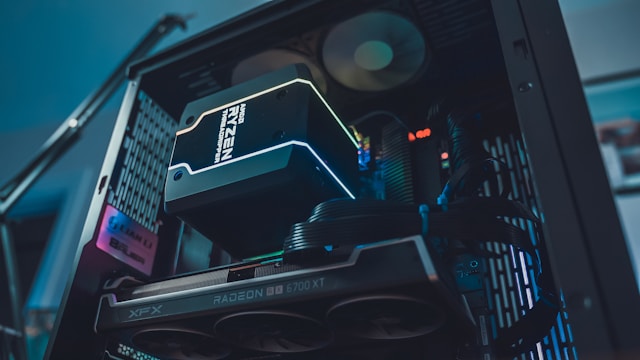Quantum Computing: A Revolution in Progress

The Quantum Leap: Exploring the Potential of Quantum Computing
For decades, computers have steadily increased in power following Moore’s Law – doubling processing capabilities roughly every two years. But we’re starting to bump up against physical limits. We’ve reached a point where further improvements using traditional silicon-based chips are becoming increasingly difficult and expensive. This is where quantum computing enters the picture, promising a revolutionary shift in computational power that could reshape industries from medicine to finance.
What is Quantum Computing? A Different Kind of Calculation
Traditional computers store information as bits – representing either a 0 or a 1. Think of it like a light switch: it’s either on (1) or off (0). Quantum computing, however, leverages the principles of quantum mechanics to perform calculations in an entirely different way.
Instead of bits, quantum computers use qubits. A qubit can represent 0, 1, *or* a superposition of both states simultaneously. This is thanks to a fundamental concept in quantum physics: superposition. Imagine our light switch again. In the world of quantum mechanics, it’s not just on or off; it exists in a blurry state where it’s partially on and partially off *at the same time*. Only when you measure its state does it “collapse” into either 0 or 1.
Another key principle is entanglement. Entangled qubits become linked together in such a way that they share the same fate, no matter how far apart they are. If you measure the state of one entangled qubit, you instantly know the state of the other – even if it’s on the other side of the universe! This interconnectedness allows for incredibly complex calculations to be performed efficiently.
How Does a Quantum Computer Actually Work?
Building a quantum computer is an immense engineering challenge. Unlike traditional computers, which rely on transistors etched onto silicon chips, qubits can be realized using various physical systems. Some of the leading technologies include:

- Superconducting Circuits: These are currently the most advanced approach, utilizing tiny electrical circuits cooled to near absolute zero temperatures (-273°C). The superconducting properties allow electrons to flow without resistance, forming qubits.
- Trapped Ions: Individual ions (charged atoms) can be trapped using electromagnetic fields and their quantum states used as qubits. This method boasts high fidelity (accuracy), but scaling up the number of qubits is difficult.
- Photonic Qubits: Using photons (particles of light) to represent qubits offers advantages such as room-temperature operation and potential for long-distance communication, but it’s still in early stages of development.
- Topological Qubits: This approach aims to create inherently more stable qubits by encoding quantum information in the topology of materials, making them less susceptible to environmental noise. It’s a very promising area, but currently challenging to implement.
Regardless of the physical system used, maintaining the delicate quantum states (superposition and entanglement) is incredibly difficult. Qubits are extremely sensitive to external disturbances like temperature fluctuations or electromagnetic radiation – this phenomenon is known as decoherence. Quantum computers require sophisticated error correction techniques and operate in highly controlled environments.
Revolutionizing Industries: The Potential of Quantum Computing
The potential impact of quantum computing across various industries is staggering. Here are a few key areas where it could bring about transformative change:
Drug Discovery & Materials Science
Developing new drugs and materials is traditionally a slow, expensive process involving extensive laboratory experiments and simulations. Quantum computers can simulate the behavior of molecules with unprecedented accuracy, allowing researchers to virtually screen millions of potential drug candidates or design novel materials with specific properties.
Imagine being able to accurately model how a drug will interact with a protein in the human body *before* it’s even synthesized – significantly reducing development time and cost. This could lead to breakthroughs in treating diseases like cancer, Alzheimer’s, and many others.
Cryptography & Cybersecurity
Current encryption methods, which protect our sensitive data online (banking transactions, government communications), rely on the mathematical difficulty of certain problems for traditional computers. Quantum computers are capable of solving these problems much faster, potentially rendering current encryption algorithms obsolete.
Shor’s algorithm, a quantum algorithm, can efficiently factor large numbers – a task that would take classical computers billions of years. This threatens widely used public-key cryptography like RSA.
However, this threat also drives the development of quantum-resistant cryptography – new encryption methods designed to be secure even against attacks from quantum computers. The transition to quantum-resistant cryptography is a critical priority for governments and organizations worldwide.
Financial Modeling & Optimization
Quantum computers can tackle complex optimization problems that are intractable for classical computers, such as portfolio optimization in finance or supply chain management.
They could analyze vast amounts of financial data to identify patterns and predict market trends with greater accuracy. Furthermore, they can optimize investment strategies to maximize returns while minimizing risks.
Artificial Intelligence & Machine Learning
Quantum machine learning algorithms have the potential to significantly improve the performance of AI models. For example, quantum support vector machines (SVMs) could achieve faster training times and higher accuracy in classification tasks.
The Current State & Future Outlook
While incredibly promising, quantum computing is still in its early stages of development. We’re currently in the “noisy intermediate-scale quantum” (NISQ) era – meaning that current quantum computers have a limited number of qubits and are prone to errors.
Scaling up the number of qubits while maintaining their quality and coherence remains a major challenge. Error correction is also crucial for building fault-tolerant quantum computers capable of performing complex calculations reliably.
Despite these challenges, progress is accelerating. Companies like Google, IBM, Microsoft, and Amazon are investing heavily in quantum computing research and development. We can expect to see continued advancements in qubit technology, error correction techniques, and the development of quantum algorithms over the next decade. The “quantum leap” may still be a few years away from widespread impact, but it’s rapidly approaching.
The future is undoubtedly quantum – and understanding this emerging technology is crucial for businesses, researchers, and policymakers alike.



